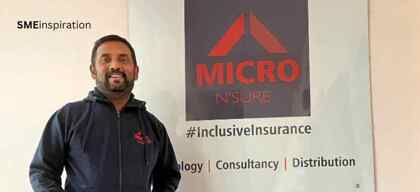How to get more customers, faster

Business Development
472 week ago — 6 min read
Every entrepreneur dreams of changing the world. The key to remember though is that paucity of resources is an annoying accomplice and meeting and exceeding customer requirements becomes a tricky, tenuous and largely traumatic effort to sustain.
The need of the hour, is a deliberate approach to sales, to help get more customers at a rapid pace that can be maintained and increased exponentially over short time horizons. In this article, we suggest a 4 step approach: Target, Prepare, Communicate and Sell.
1. Target
While identifying your target customer is possibly the most important step of the sales process, yet targets are usually either not very clear, or often ignored. We suggest the following:
a) Define your customer criteria: Get a clear idea about what your target client looks like, their line of work, budget, purchasing habit, etc. A day care centre owner, for example, would want to target young parents. However, it would be more intuitive to target ‘urban parents in the age of 30-40 with a disposable combined income of over INR 10 lakhs’. If you’re selling to businesses, define the kind of businesses you would like to target.
b) Create a ‘Client List’: Once you identify the criteria, make a target list of customers (if you’re selling to businesses. If you’re selling to end customers, make an initial list of customers that you can sell your products to).
c) Quantify targets: Define annual, monthly and weekly targets. Keep in mind the sales funnel. For example, If 50 customers are made aware of your product, 30 customers may be responsive, 10 might show initial interest and 5 might actually buy your product. So to get 5 clients, you need to get in touch with 50.
d) Track progress: See whether you’re making progress. Without tracking, most plans are quickly abandoned. Keep checking progress constantly and take appropriate action if you’re falling behind.
e) Targets change: Targets are not set in stone and may occasionally change (though hopefully not too often). Once you start the sales process, you might realise you’ve been too ambitious or not ambitious enough. Always ensure that your target is realistic.
2. Prepare
Once you’ve set your targets, you might be tempted to start reaching out to your target customer segment. However, before you do, it’s best to prepare for the interaction with your customer to be able to articulate the value of your product effectively.
a) Why your product: Why should your potential customer buy your product over your competitor’s? Highlight what makes your product different.
b) Test the waters: Carry out a market assessment, speak to prospects for validation, run a Proof of Concept (PoC) to understand how initial customers are reacting to your product.
c) Prepare sales collateral: Once you think about what makes your product unique, it’s time to start creating marketing material: brochures, presentations, etc. Run these collateral through your team and advisors to ensure that they’re effectively delivering the intended message.
d) Craft the perfect pitch: When Steve Jobs would introduce a product at the Worldwide Developer conference, he would highlight what made his product truly unique in a brief, succinct manner. The best pitches are usually brief and simple. If it’s difficult to explain your proposition clearly in a few minutes, you might want to consider rewording it.
3. Communicate
Now that you’re prepared with all that you need to meet customers, it’s time to find them and start reaching out!
a) Locate your customers: Understand where your customers spend most of their time – which sites do they go to? Where do they shop? Where can you meet them?
b) Make your pitch: Once you’ve located your customers, get in touch with them – through social media, word of mouth, events, etc. Use your perfectly crafted pitch to get them interested!
c) Under-promise and over-deliver: Be wary of promising more than you can deliver. Always leave room to exceed expectations. Delighted customers make great ambassadors for your product.
d) Take feedback seriously: Constructive feedback from prospects can help you construct a stronger pitch or make vital changes to your product.
4. Make the sale!
a) Incentivize: Give your customers a strong reason to buy: Is it because you offer the best prices? Or the largest range? Or the best experience?
b) Bring about urgency: To help close the sale faster, provide your prospect a reason to close early such as a limited period discount, complimentary products, special perks, etc.
c) Make the sales easy: Amazon made the 1-click purchase famous. Making the process of sale easier for your customer will make them more likely to buy right away.
d) Retention is key: Retention is critical. Repeat customers are the best way of understanding whether your product is working. If customers aren’t buying again, maybe it’s time to rethink your product strategy.
In the end, the best indicator of success is quite obviously sales: The difference between a good product and great product, is that a good product makes people curious, while a great one makes them buy.
Network with SMEs mentioned in this article
View Tejas 's profile
SME Inspirations
Most read this week















Comments (8)
Share this content
Please login or Register to join the discussion